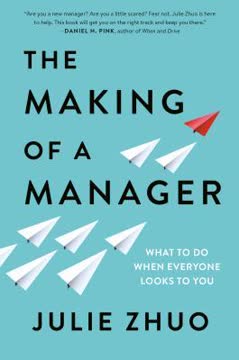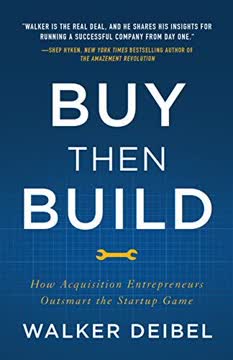Key Takeaways
1. Financial statements are your business dashboard, not just for accountants
"If you can't read your financial dashboard, you're driving with your eyes blindfolded."
Your financial compass. Financial statements are not just for accountants or the IRS; they are your essential tools for navigating your business. Think of them as your business dashboard, providing critical information about your company's performance, health, and direction. Just as you wouldn't drive a car without looking at the speedometer, fuel gauge, and oil pressure indicator, you shouldn't run your business without understanding your financial statements.
Three key gauges. Your financial dashboard consists of three main gauges:
- Net Income Statement (speedometer): Shows if you're making a profit
- Cash Flow Statement (gas gauge): Indicates if you have enough cash to operate
- Balance Sheet (oil pressure gauge): Reveals the overall financial health of your business
Understanding these statements doesn't require an accounting degree. With some basic knowledge, you can gain valuable insights into your business's performance and make informed decisions to steer it towards success.
2. Net Income Statement: The speedometer of your business profitability
"Every product or service must have a gross margin of at least 30 percent of net revenue or 45 percent above cost of goods sold."
Profit roadmap. The Net Income Statement, also known as the Profit and Loss Statement, shows whether your business is making money, breaking even, or losing money. It's like the speedometer of your business, indicating how fast you're moving towards profitability.
Key components of the Net Income Statement:
- Net Revenue: Total sales after discounts
- Cost of Goods Sold (COGS): Direct costs to produce your product or service
- Gross Margin: Net Revenue minus COGS
- Operating Expenses: Fixed and variable costs to run your business
- Net Income: What's left after all expenses are paid (your profit)
To ensure profitability, focus on maintaining a healthy gross margin. Aim for at least 30% of net revenue or 45% above COGS. This provides enough cushion to cover operating expenses and still generate a profit. Regularly review your Net Income Statement to identify trends, spot problems early, and make necessary adjustments to your pricing, costs, or operations.
3. Cash Flow Statement: Your business gas gauge, crucial for survival
"Cash is to your business as blood is to your body."
Liquid lifeline. The Cash Flow Statement is perhaps the most critical financial document for small businesses. It shows the inflow and outflow of cash, indicating whether you have enough fuel to keep your business running. Many profitable businesses fail due to poor cash flow management.
Key aspects of cash flow management:
- Monitor cash inflows and outflows regularly (weekly is ideal)
- Understand the timing difference between sales and cash receipt
- Manage accounts receivable aggressively
- Negotiate favorable payment terms with suppliers
- Maintain a cash reserve for unexpected expenses or slow periods
Remember, profit doesn't equal cash. You can be showing a profit on paper but still run out of cash if you're not managing your cash flow effectively. Create a cash flow budget to anticipate future cash needs and take proactive measures to ensure you always have enough cash to operate and grow your business.
4. Balance Sheet: The oil pressure gauge revealing overall business health
"The Balance Sheet holds the secret to what your company is worth."
Financial snapshot. The Balance Sheet provides a snapshot of your business's financial position at a specific point in time. It shows what your business owns (assets), what it owes (liabilities), and the difference between the two (owner's equity or net worth). This statement is crucial for understanding your business's overall financial health and its ability to meet both short-term and long-term obligations.
Key components of the Balance Sheet:
- Assets: What the business owns (cash, inventory, equipment, etc.)
- Liabilities: What the business owes (loans, accounts payable, etc.)
- Owner's Equity: The difference between assets and liabilities
Analyzing your Balance Sheet can reveal important insights:
- Liquidity: Can you meet short-term obligations?
- Solvency: Can you meet long-term obligations?
- Efficiency: How well are you using your assets?
- Leverage: How much of your business is financed by debt vs. equity?
Regularly review your Balance Sheet to ensure your business maintains a healthy financial position and to identify areas for improvement.
5. Gross margin is the lifeblood of your business, aim for at least 30%
"You run the business on gross margin, not on revenues."
Profit potential. Gross margin is the difference between your selling price and the direct cost of producing your product or service (COGS). It's crucial because it determines whether you'll have enough money left over after covering direct costs to pay for operating expenses and generate a profit.
Key points about gross margin:
- Aim for at least 30% of net revenue or 45% above COGS
- Calculate gross margin for each product or service you offer
- Use gross margin to guide pricing decisions
- Improve gross margin by increasing prices or reducing COGS
- Drop products or services with consistently low gross margins
Regularly analyze your gross margins to ensure they're healthy across all your offerings. If margins are too low, consider strategies to improve them, such as raising prices, finding more efficient production methods, or negotiating better terms with suppliers. Remember, a higher gross margin gives you more flexibility to cover operating expenses, invest in growth, and weather economic downturns.
6. Break-even point: When your business becomes truly self-sustaining
"The breakeven point is the first triumph on the road to profitability."
Financial milestone. The break-even point is when your total revenue equals your total costs, meaning you're neither making a profit nor incurring a loss. It's a critical milestone for any business, as it marks the point where your business becomes self-sustaining.
Understanding and calculating your break-even point:
- Fixed Costs ÷ (Price per Unit - Variable Cost per Unit) = Break-even Units
- Break-even Units × Price per Unit = Break-even Revenue
Knowing your break-even point helps you:
- Set realistic sales targets
- Make informed pricing decisions
- Evaluate the viability of new products or services
- Understand how changes in costs or prices affect profitability
Strive to reach your break-even point as quickly as possible by managing costs effectively and focusing on increasing sales. Once you've reached break-even, every additional sale contributes directly to your profit. Regularly recalculate your break-even point as your costs and prices change to ensure you're always working towards profitability.
7. Diversify your client base to reduce risk and stabilize revenue
"Every customer or client is like a company in an investment portfolio."
Risk mitigation. Just as you wouldn't put all your savings into a single stock, you shouldn't rely too heavily on a small number of clients for your business revenue. Diversifying your client base helps reduce risk and stabilize your revenue stream.
Strategies for client diversification:
- Aim for no single client to represent more than 15% of your revenue
- Expand into new markets or customer segments
- Develop new products or services to attract different types of clients
- Build a mix of small, medium, and large clients
- Focus on cultivating long-term relationships with multiple clients
Remember, large clients can sometimes be less profitable due to their bargaining power and demanding service requirements. A diverse mix of clients not only reduces risk but can also lead to more stable cash flow and potentially higher overall profitability. Regularly review your client portfolio to ensure you're maintaining a healthy balance.
8. Manage accounts receivable aggressively to maintain healthy cash flow
"If you don't collect from your customers, the business is carrying the burden of paying for the COGS on the products shipped without any benefit of cash payment or increase in owner's equity."
Cash collection. Effective management of accounts receivable is crucial for maintaining healthy cash flow. The faster you collect payment from your customers, the more cash you have available to run and grow your business.
Best practices for managing accounts receivable:
- Invoice promptly and accurately
- Offer incentives for early payment
- Follow up on overdue accounts quickly and consistently
- Consider offering multiple payment options to make it easier for customers to pay
- Establish clear credit policies and stick to them
- Build relationships with your customers' accounts payable departments
Remember, a sale isn't complete until you've collected the cash. Monitor your accounts receivable aging regularly and take action on overdue accounts. The longer an invoice remains unpaid, the less likely you are to collect it. By managing your receivables aggressively, you can improve your cash flow and reduce the risk of bad debts.
9. Control expenses ruthlessly, especially in the early stages
"Keep fixed expenses as low as possible for as long as possible."
Cost discipline. Controlling expenses is crucial for business success, especially in the early stages when revenue might be unpredictable. Every dollar saved on expenses is a dollar that can be reinvested in growing your business or improving your profit margin.
Strategies for expense control:
- Differentiate between necessary expenses and "nice-to-haves"
- Negotiate with suppliers for better terms or discounts
- Use technology to automate and streamline operations
- Consider outsourcing non-core functions
- Regularly review and challenge all expenses
- Avoid long-term commitments that increase fixed costs
Be particularly cautious about taking on fixed expenses, such as rent or full-time employees, until your revenue is stable and predictable. Remember, it's easier to increase expenses as your business grows than it is to cut them when times are tough. Cultivate a culture of cost-consciousness throughout your organization to ensure long-term financial health.
10. Use financial ratios to spot trends and make informed decisions
"Ratios and percentages will help you see how the numbers relate to each other."
Performance metrics. Financial ratios provide a quick and easy way to assess your business's performance and financial health. They allow you to spot trends, compare your performance to industry benchmarks, and make more informed business decisions.
Key financial ratios to monitor:
- Net Margin Percentage: (Net Income ÷ Net Revenue) × 100
- Gross Margin Percentage: (Gross Margin ÷ Net Revenue) × 100
- Accounts Receivable Turnover: Yearly Credit Sales ÷ Accounts Receivable
- Current Ratio: Current Assets ÷ Current Liabilities
- Quick Ratio: (Cash + Accounts Receivable) ÷ Current Liabilities
Regularly calculate and track these ratios to gain insights into your business's profitability, efficiency, and liquidity. Compare your ratios to industry benchmarks and your own historical performance to identify areas for improvement. Remember, ratios are most useful when viewed over time to spot trends and patterns in your business performance.
11. Build a strong banking relationship by understanding their perspective
"Make the bank your partner. It cares about managing risk, but it also cares that the small business you manage succeeds."
Financial partnership. Building a strong relationship with your bank can provide significant benefits for your business, including easier access to credit and valuable financial advice. Understanding how banks evaluate businesses can help you present your company in the best light and negotiate more favorable terms.
Key points to remember when dealing with banks:
- Banks look for businesses with stable, predictable cash flow
- They assess your ability to repay loans based on your financial statements
- Banks value transparency and honesty in financial reporting
- They prefer businesses with diversified revenue streams and client bases
- Banks appreciate proactive communication, especially when facing challenges
Prepare thorough, accurate financial statements and be ready to explain your business model, growth plans, and risk management strategies. Build a personal relationship with your banker and keep them informed about your business's progress and challenges. A strong banking relationship can be a valuable asset, providing support and resources as your business grows and evolves.
Last updated:
FAQ
What's Accounting for the Numberphobic about?
- Focus on Financial Literacy: The book aims to simplify accounting for small business owners who are intimidated by numbers, offering practical guidance on financial statements.
- Survival Guide for Entrepreneurs: It serves as a guide to help small business owners navigate financial management complexities and avoid common pitfalls leading to failure.
- Empowerment Through Knowledge: Author Dawn Fotopulos emphasizes the importance of understanding financial statements for business success and financial health control.
Why should I read Accounting for the Numberphobic?
- Overcome Number Anxiety: Designed for those who struggle with financial statements, the book helps readers gain confidence in managing business finances.
- Practical Tools and Strategies: Offers actionable tools and strategies to improve profitability and cash flow, making it a valuable resource for small business owners.
- Real-World Examples: Fotopulos shares insights from her experience, making complex concepts relatable and easier to understand.
What are the key takeaways of Accounting for the Numberphobic?
- Understanding Financial Statements: Breaks down the Net Income Statement, Cash Flow Statement, and Balance Sheet, explaining their importance in business management.
- Focus on Gross Margin: Emphasizes running a business on gross margin, not just revenue, highlighting the need to understand costs and pricing.
- Breakeven Analysis: Stresses the importance of knowing your breakeven point for ensuring business sustainability and profitability.
What are the best quotes from Accounting for the Numberphobic and what do they mean?
- “You run the business on gross margin, not on revenues.”: Highlights the importance of understanding costs and pricing strategies for profitability.
- “The definition of bankruptcy is running out of cash.”: Emphasizes the critical need for effective cash management in business operations.
- “Every product or service must have a gross margin of at least 30 percent of net revenue.”: Serves as a benchmark for ensuring offerings are financially viable.
What is the Net Income Statement, and why is it important according to Accounting for the Numberphobic?
- Profitability Indicator: Shows whether a business is making a profit, breaking even, or losing money, answering critical questions about financial health.
- Key Components: Includes net revenue, cost of goods sold (COGS), gross margin, fixed expenses, and net income, aiding in informed pricing and cost management decisions.
- Monthly Review: Fotopulos recommends monthly reviews to track performance and make necessary adjustments, vital for maintaining profitability.
How can I improve my profits using the Net Income Statement from Accounting for the Numberphobic?
- Analyze Pricing Strategy: Ensure pricing covers costs and provides a sufficient gross margin, with a recommended minimum of 30 percent of net revenue.
- Diversify Client Base: Avoid reliance on a single client for revenue to mitigate risk and stabilize income.
- Cut Unprofitable Products: Identify and eliminate products or services that do not contribute positively to gross margin.
What is the Cash Flow Statement, and how does it differ from the Net Income Statement in Accounting for the Numberphobic?
- Cash Management Tool: Tracks actual cash inflow and outflow, unlike the Net Income Statement, which records revenue and expenses based on accounting principles.
- Timing of Cash Events: Reflects cash transactions, while the Net Income Statement may show uncollected revenue, crucial for understanding liquidity.
- Importance of Cash Flow: Fotopulos emphasizes monitoring cash flow regularly to avoid financial crises, as running out of cash defines bankruptcy.
What is the breakeven point, and why is it significant in Accounting for the Numberphobic?
- Self-Sustaining Indicator: The breakeven point is where total revenue equals total expenses, indicating financial sustainability.
- Calculation of Breakeven Volume: Divide fixed expenses by the net margin per unit to understand how many units need to be sold to cover costs.
- Goal for Business Health: Reaching the breakeven point is a critical milestone, indicating a path to profitability and sustainable profits.
How can I manage my cash inflow effectively according to Accounting for the Numberphobic?
- Establish a Payable Policy: Define payment terms for clients to ensure timely payments and reduce overdue invoice risks.
- Invoice Promptly: Send invoices the same day services are rendered or products delivered, as prompt invoicing is crucial for cash flow.
- Follow Up on Payments: Regularly check outstanding invoices and follow up with clients to maintain healthy cash flow and reduce late payments.
What are some common cash-burning traps to avoid as per Accounting for the Numberphobic?
- Hiring Without Accountability: Avoid hiring without clear performance metrics to prevent wasted resources.
- Overly Complex Websites: Invest in simple, user-friendly designs to avoid extensive maintenance and support costs.
- Ignoring Client Payment Behavior: Be cautious of clients with late payment histories and conduct due diligence before extending credit terms.
How does Accounting for the Numberphobic define cash flow?
- Definition of Cash Flow: Movement of cash in and out of a business, crucial for meeting obligations and funding operations.
- Importance of Cash Flow: Emphasizes that cash flow management is vital, as "cash is the hardest thing to replenish and the easiest thing to lose."
- Cash Flow Statement: Highlighted as a key tool for tracking cash flow, showing how cash is generated and spent over a specific period.
How can I improve my Balance Sheet according to Accounting for the Numberphobic?
- Increase Assets Faster: Advise increasing assets faster than liabilities to strengthen the Balance Sheet and improve owner’s equity.
- Manage Liabilities: Reducing liabilities while maintaining or increasing assets enhances the Balance Sheet's health.
- Regular Review: Regularly reviewing the Balance Sheet helps identify areas for improvement and ensure financial stability.
Review Summary
Accounting for the Numberphobic receives high praise from readers for its accessible approach to business accounting. Reviewers appreciate the author's ability to explain complex financial concepts in simple terms, making it valuable for small business owners and entrepreneurs. The book covers essential financial reports, offering practical advice on pricing, profitability, and cash flow management. While some readers found certain sections repetitive or lacking in-depth explanations, most agree it's an excellent resource for understanding basic accounting principles and improving business financial literacy.
Similar Books










Download PDF
Download EPUB
.epub digital book format is ideal for reading ebooks on phones, tablets, and e-readers.




